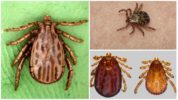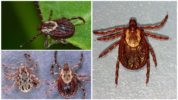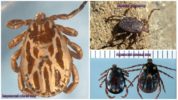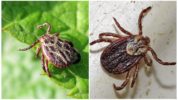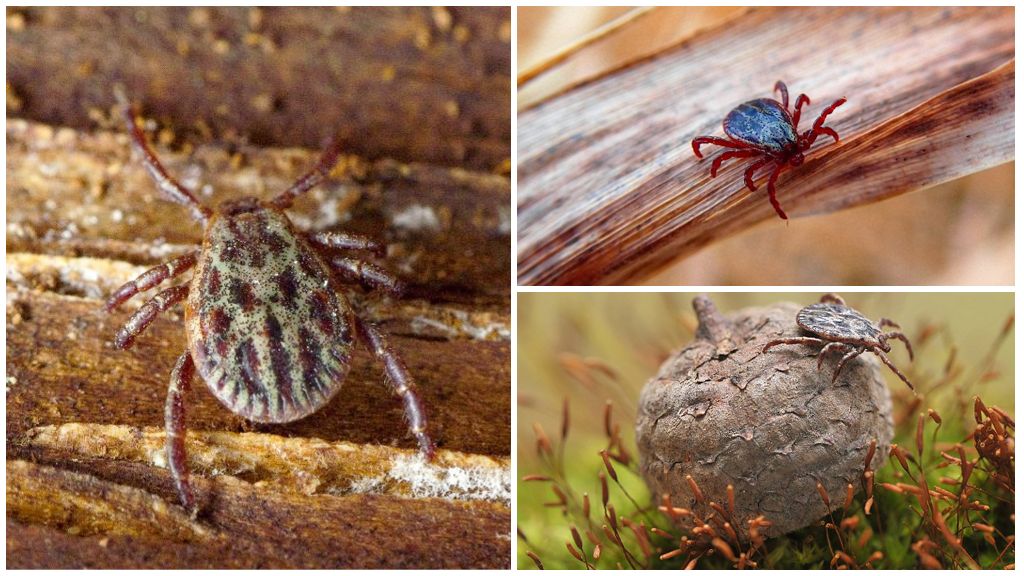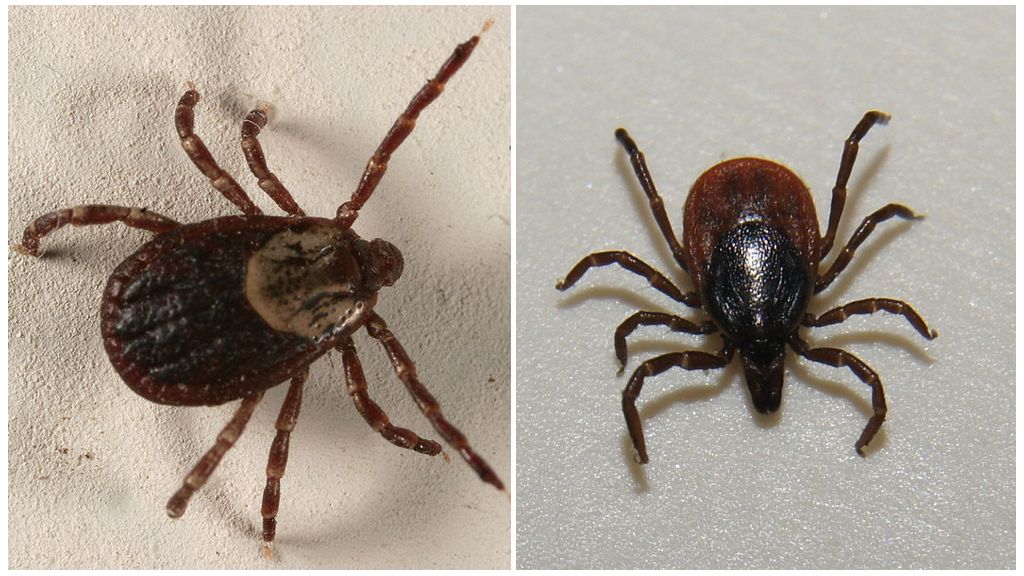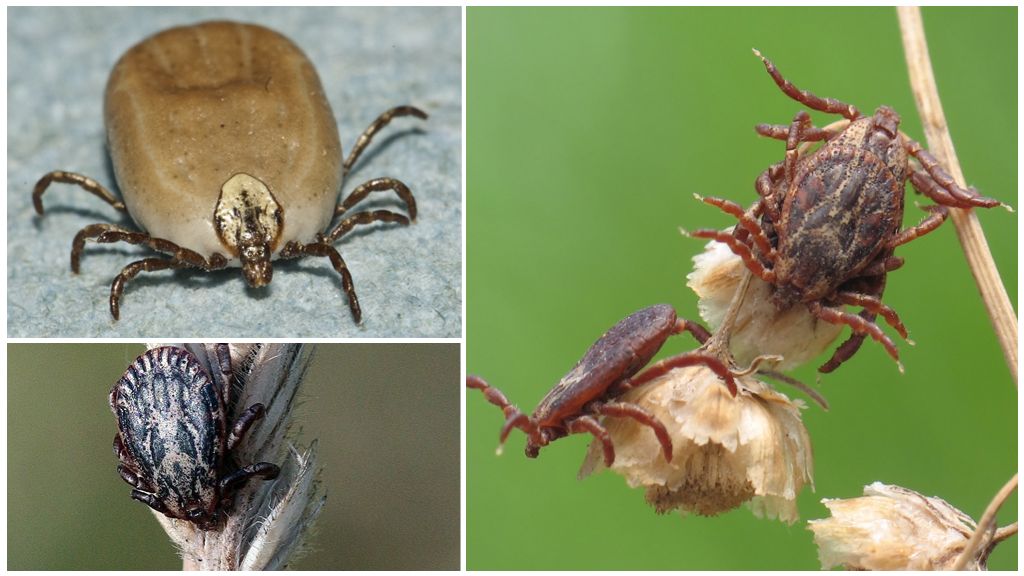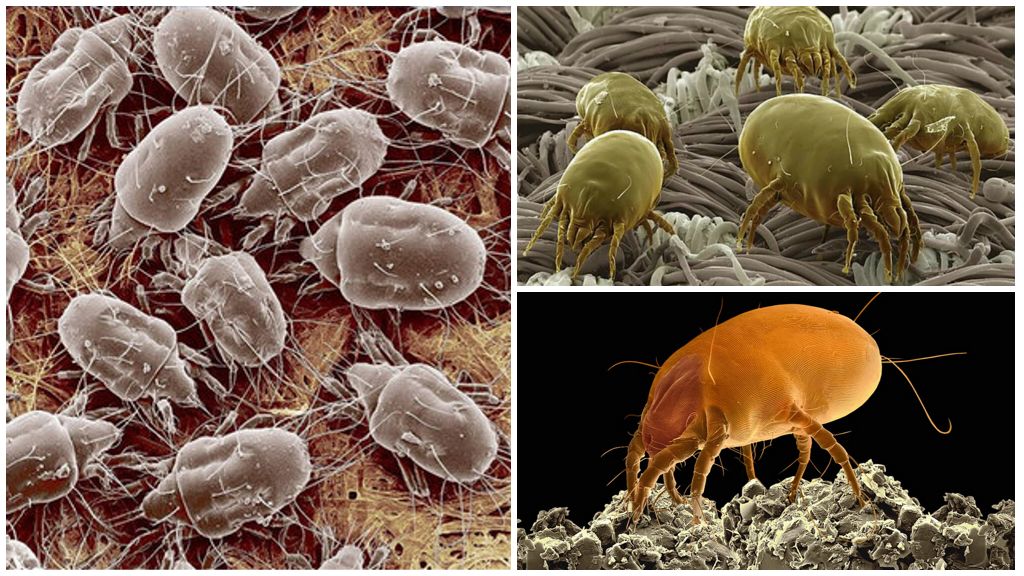- Winter tick
- Rocky Mountain Wood Mite
- Types of ticks of dermacenters
- Meadow and pasture tick
The superfamily of ixodid ticks, notorious for tick-borne encephalitis and borreliosis, consists of 3 families. The most numerous of them: ixodidae, is divided into 6 subfamilies. One of them, amblyommins, includes the genus of dermacenter, which even received the general name "American dog tick." Mite dermacenter is more common in the Nearctic zone, that is, the main species live in North America. But they are found not only on the North American continent. This is a kind of cosmopolitan. Its representatives are even in Australia, long isolated from the rest of the mainland. But in the neotropical zone and Australia, the species composition of this genus is limited.
Types of Dermacenters
Ticks of the genus dermacentor– the most numerous of all ixodic family. Only a few species have been well studied:
- winter tick (Dermacentor albipictus);
- Rocky Mountain Wood Mite (Dermacentor andersoni);
- American Canine / Wood (Dermacentor variabilis);
- African elephant (Dermacentor circumguttatus);
- Indian (Dermacentor auratus);
- meadow (Dermacentor reticulatus)
- pasture (Dermacentor marginatus).
On a note!
In ticks of the genus dermacenter, the life cycles and the number of hosts are very different. But all these parasites peddlers of dangerous diseases.
The appearance of the dermacenter
In general, these ticks are similar to the more well-known Russians european canine and taiga ticksbelonging to another family. But the color of the dermacenter is brighter. Some of these parasites might even seem beautiful, if not for their lifestyle.
The color of all is bright brown with different shades. Some have light dots or patterns on the cephalothorax or back. All members of the genus have eyes. The development cycle is one-, two- or three-hosted.
Winter tick
The habitat is all of North America. This is a parasite of moose. The environmental services of America have evidence that the winter tick may be responsible for a significant decrease in the population of eastern moose.
Interesting!
One moose found 75,000 ticks. Such an amount can lead to weakening and death of the animal due to large blood loss.
Dermacentor albipictus is reddish brown. The body length of a well-fed female is up to 1.5 cm. The size of hungry individuals is about 0.5 cm.
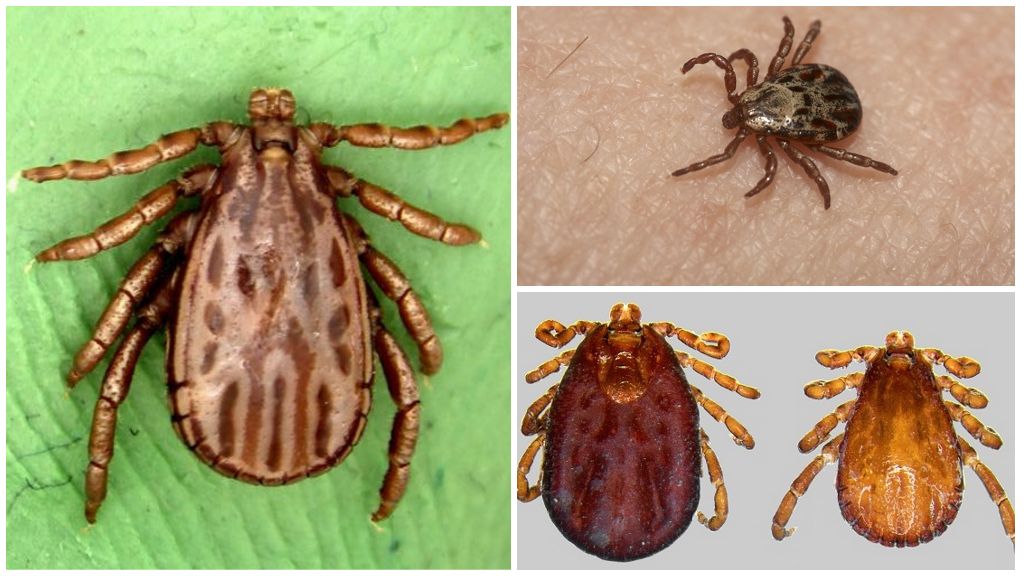
The life cycle of the tick Dermacentor albipictus lasts a year. All this time the parasite is on the same host. The larva that emerged from the egg at the end of summer climbs through the grass to a height of 1.25 m and clings to the passing animal. On the host, the larva goes through the nymph stage and turns into an adult. At the end of winter, both the males and the drunken blood of the female fall to the ground, where they lay their eggs and die.
Rocky Mountain Wood Mite
Dermacentor andersoni lives in the northwestern United States and in southwestern Canada along the Rocky Mountains. This is a bloodsucker with a rigid flat body, 2-5 mm in size. A well-fed female reaches 1.5 cm. The color is brown or red-brown. On the upper side of the abdomen, the females have a silver pattern that turns gray after the tick drinks blood. Males have gray or white spots that do not form a pattern.
The life cycle takes 1-3 years and depends on external weather factors.Stage of development 4. Three-mite tick. The larva emerging from the egg finds the first victim. After drinking blood, the parasite falls off and sheds a nymph on the ground. The nymph repeats the cycle and turns into an adult.
Important!
Larvae and nymphs do not attack humans, while adults consider humans as a source of nutrition.
Nymphs hibernate, which can go without food or adult ticks for a long time. In late May and early July, a well-fed female falls to the ground and lays 2500-4000 eggs for 10-33 days. The appeared larvae cling to the host's legs and crawl into the neck and chest. The female laying eggs and the male fertilizing her die after breeding.
Dermacentor andersoni are carriers of:
- Colorado Tiger Fever;
- Rocky Mountain Spotted Fever;
- tularemia.
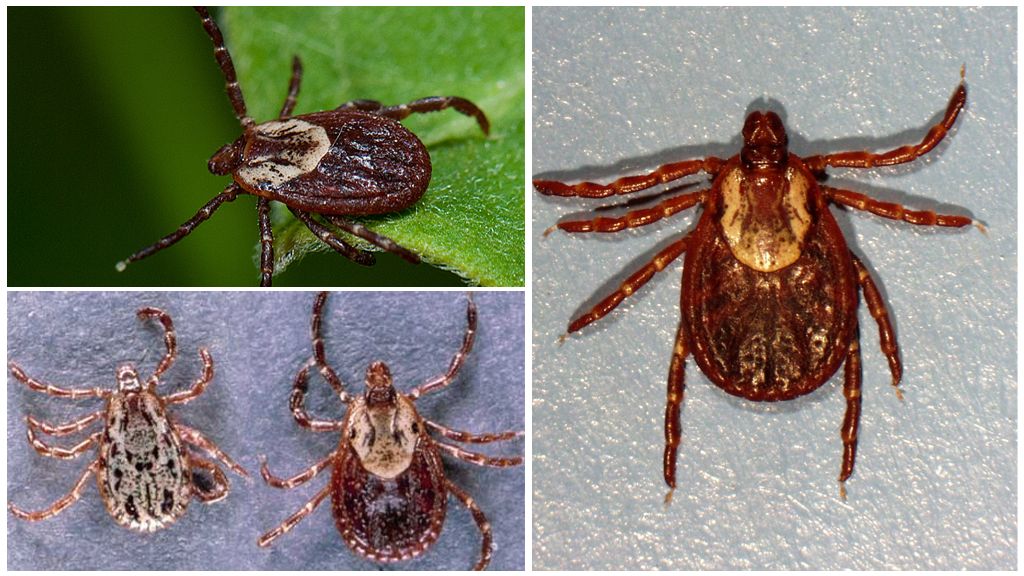
Rocky Mountain Spotted Fever is more susceptible to another species of American tick, Dermacentor variabilis (American canine).
American Dog / Wood
Dermacentor variabilis is distributed throughout the North American continent and is the main carrier of tick-borne diseases. It can carry:
- Lyme disease
- tularemia;
- human granulocytic anaplasmosis;
- monocytic human ehrlichiosis;
- Rocky Mountain spotted fever.
To transmit the disease, the tick must be on the human body for at least 2 hours. If you notice the parasite in time, you can remove it before infection.
The American dog tick is a brightly colored arthropod. The female has a very light chest and a red-brown torso. The male has a white pattern on the cephalothorax so large that it almost covers the main dark brown background.
Life cycle varies depending on environmental conditions. Three-mite tick. It becomes a carrier of diseases during development into an adult. The female lays uninfected eggs, from which uninfected larvae emerge. The latter use various mammals as hosts, including the protein of both mice and birds. At this time, the larva may become infected with the virus. The nymph eats the same objects. An adult tick prefers larger animals, ranging in size from possum and cat.
On a note!
People enter the diet of all three stages of the varibilis dermacenter.
African elephant
Dermacentor circumguttatus was found only on a bushy duker and two species of African as if: savannah and forest. Hungry parasites 3-5 mm long. Color brown with a yellow tint. Males have 8 bright spots on the border of the dorsal scute. Females have 3 spots on the shield: one at the back and one from each side closer to the head.
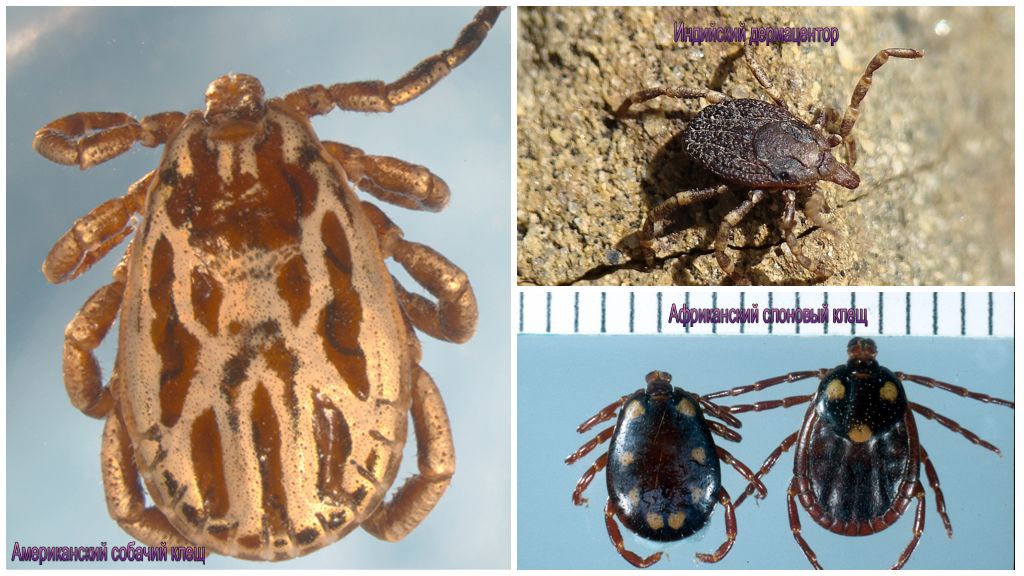
Indian dermacenter
The most dangerous type of dermacenter for humans. Area:
- India;
- Sri Lanka;
- Indonesia;
- Vietnam;
- Thailand.
Adults are potential carriers of rickettsia, gram-negative bacteria, protozoan blood parasites, and the new Lanyang virus, recently isolated from the auraratus de-center in Malaya. Parasitizes on mammals and pythons. Data on pythons is not confirmed. Among the owners of the dermacenter are deer, people, wild pigs.
The body length of a hungry parasite is 7 mm. Width is 5 mm. In adults, the body, chest and legs are decorated with rich patterns.
Meadow tick
Range - Europe and West Asia. Habitats - forest areas. Distributed in Russia. This dermacenter also has other names:
- patterned brown;
- patterned dog;
- marsh.
The body size of a hungry female 3.8-4.2 mm, male 4.4-4.8 mm. Having drunk blood, the female increases to 10 mm. The main color is dark brown. The back of the male is richly decorated with a light pattern. It is often difficult to see the main color of the arthropod under the pattern.
This is a three-host bloodsucker. Due to the change of owners during life, the tick is dangerous to humans. The female drinks blood for 9-15 days. After falling to the ground, it lays from 3 to 4.5 thousand eggs. The larva hatches after 2-3 weeks and begins hunting for the host.
Dermacenter reticulum transfers:
- babesiosis;
- gram-negative bacteria;
- rickettsia;
- Q fever;
- tick-borne encephalitis;
- pyroplasmosis.
On a note!
Between the ixodic dog tick and meadow dermacenteras between carriers of diseases, there is no difference.
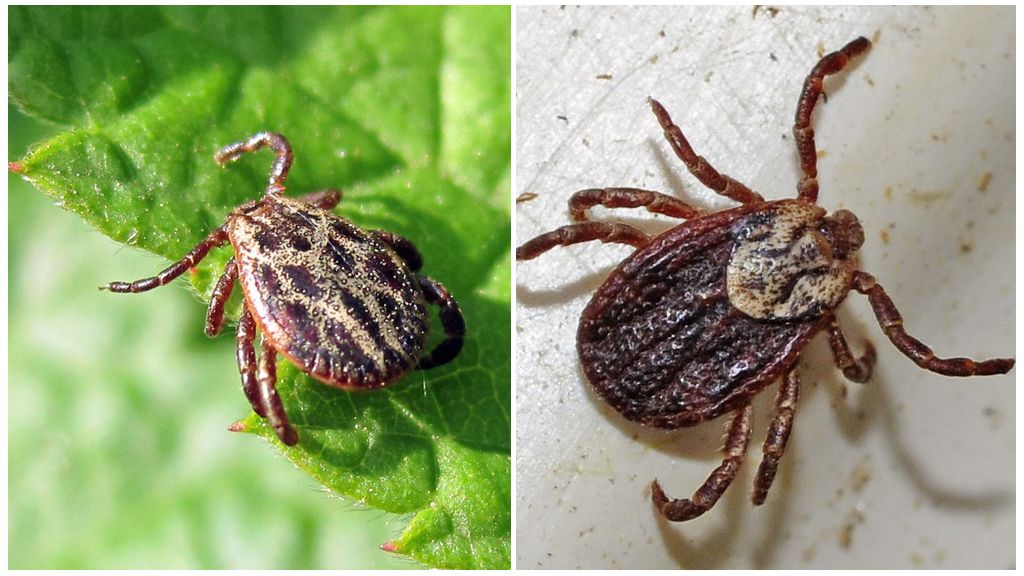
Pasture tick
Another European representative of the genus dermacenter. The range of Dermacentor marginatus also covers all of Europe and Western Asia. But they intersect with meadow only at the borders of their ranges, since these types of dermacenters live in different biotopes. Lugovoi loves wet places, and pasture tick dry steppe areas. Dermacenter marginatus prefers alpine meadows, semi-desert areas, forest-steppes. In the north, the ranges of both types of dermacenter coincide, but in the pasture tick the habitat extends further south than in the meadow.
The life cycle of a pasture dermacenter is 1-2 years, depending on when the adult individual finds a host. The victims of adult pasture ticks are:
- sheeps;
- goats
- horses;
- cows
- dogs;
- some wild animals.
On a note!
It prefers bloodsucking of sheep, which is why it is called the “sheep tick”. Sometimes pasture dermacenter attacks people.
The parasite is three-hosted. Larvae drink blood from small mammals. Nymphs can attack hedgehogs, foxes and wolves. The color of the Dermacentor marginatus is very similar to the patterns of the meadow tick. A layman will confuse these two kinds.
Ways to fight
Individual protective measures against dermacenters are the same as protective measures against ixodic. For a walk in the forest you need to go in special clothes that will not allow bloodsuckers to get to the body. Animals are protected by acaricidal preparations for dogs, means for catsthat are equally effective on dermacentors and on ixodic ones.
Upon returning from the forest, the body is carefully examined. Sucking ticks of all genera and families neatly removeput in a small container and submit for analysis.
